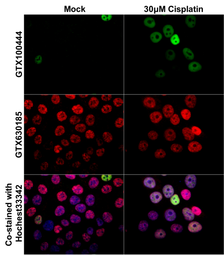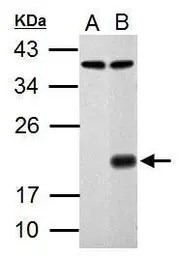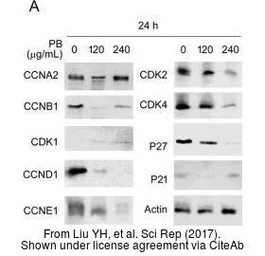p21 Cip1 antibody
Cat. No. GTX100444
Cat. No. GTX100444
-
HostRabbit
-
ClonalityPolyclonal
-
IsotypeIgG
-
ApplicationsWB ICC/IF
-
ReactivityHuman, Rat



